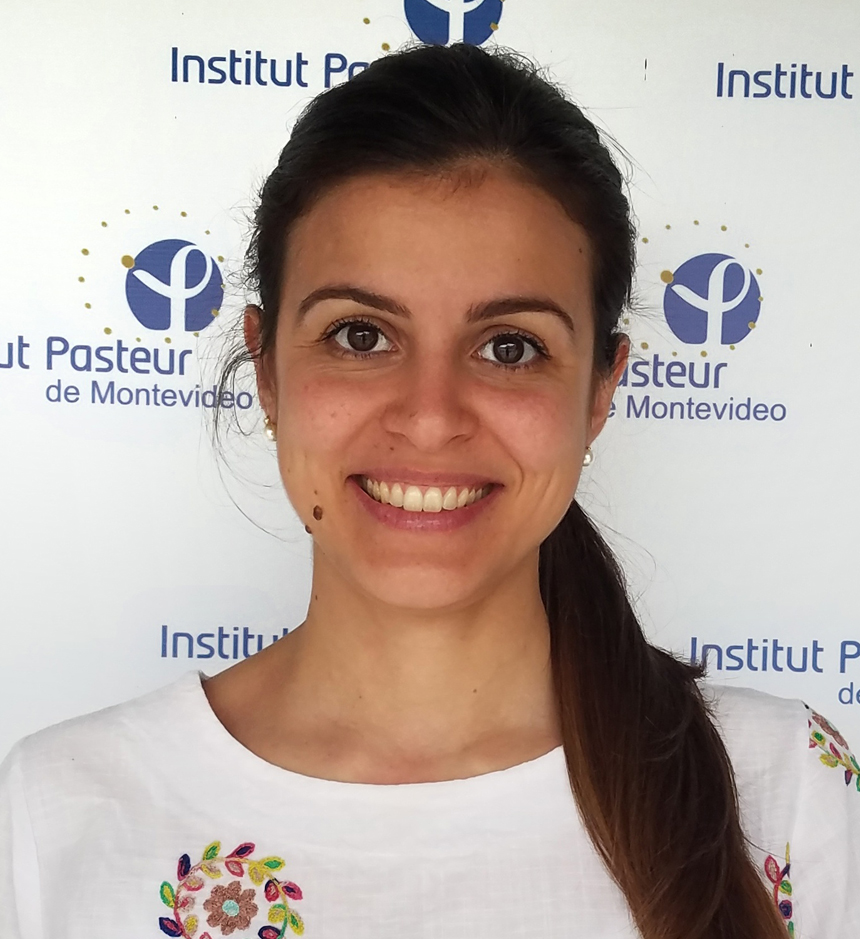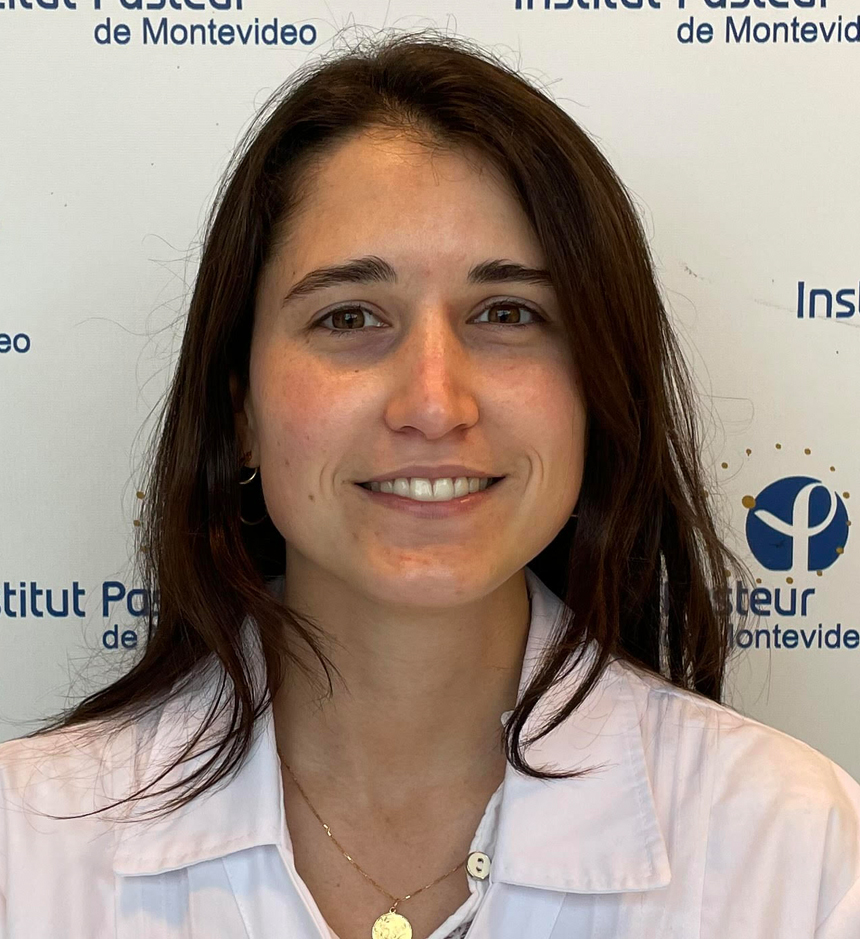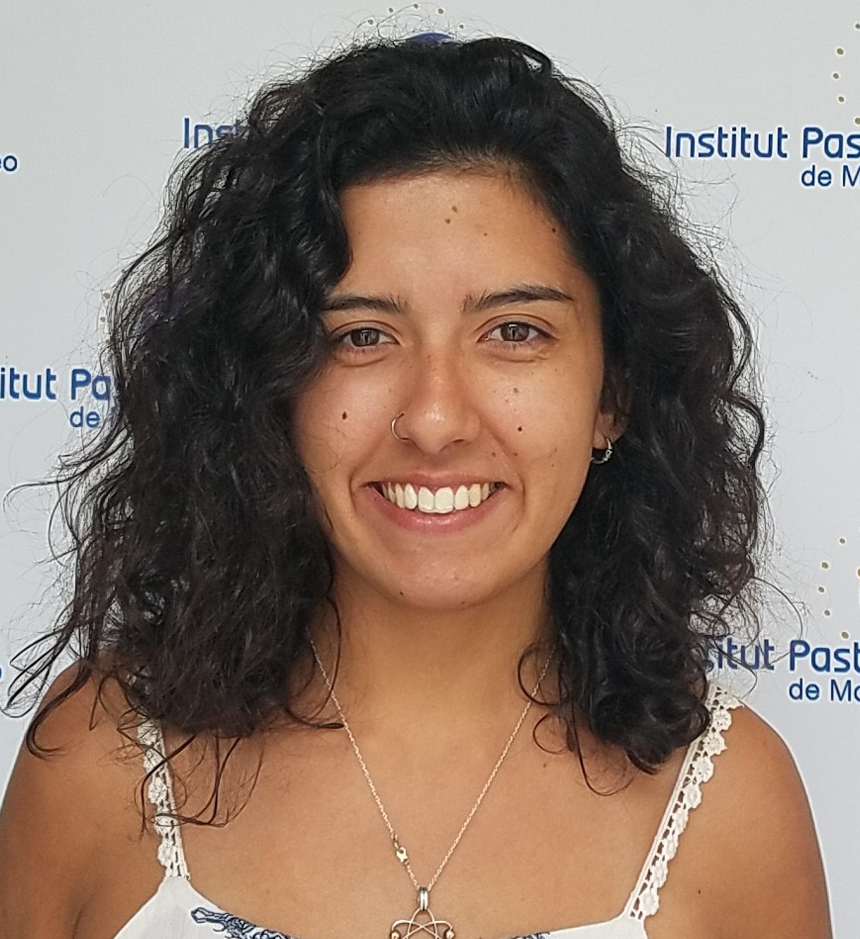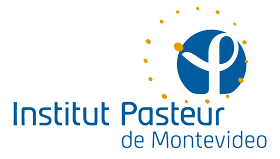Worm Biology Laboratory
Our laboratory (joint between IP Montevideo and the Faculty of Chemistry, Udelar) investigate how worms get energy. Parasitic worms —also known as helminths— infect a quarter of the world’s population. Eight of the twenty diseases catalogue by WHO as unattended are caused by helminths, while infections by these organisms in livestock and crops constitute a major economic problem for developing countries.
For these parasites there are no commercial vaccines available and there is an urgent need for new antihelmintics. We seek to identify “Achilles heels” of helminth metabolism. In particular, we study helminth metabolic pathway that harvest energy under hypoxic conditions, such as those found in the gastrointestinal tract of their hosts.
We also established whole organism motility bioassays in order to discover new antihelmintics that paralyze worms.
Our laboratory also investigates in selenium biology, an essential micronutrient for most organisms, including mammals. For most of our research we use the C. elegans worm as a model.
Members




Gonzalo Suárez
Honorary research associate
Mariel Fontes
Degree student

Victoria Núñez
Degree student
Laura Bisio
Degree student
Research lines
Malate dismutation in helminths
We aim to elucidate aspects of this metabolic pathway that allows parasitic worms to harvest energy under hypoxic conditions, such as those found in the gastrointestinal tract of their hosts.
Thioredoxin and glutathione systems of parasitic flatworms
These organisms have linked pathways of thioredoxin and glutathione, with thioredoxin glutathione reductase as the sole enzyme serving both pathways. We are currently investigating structural aspects of this enzyme and determinants of redox function and iron-sulfur binding of thioredoxins and glutaredoxins.
Search for new anthelmintics
Based on a motility test of C. elegans we aim to identify, from libraries of natural and synthetic products, new anthelmintics.
Selenium metabolism
We seek to understand pathways of metabolization and response to the trace element selenium in animals, by direct and reverse genetic approaches using C.elegans as a model organism.
Courses
- «Thiols: Key Players in the Redox Regulation of Cellular Functions». International Symposium. Feb 28-March 1 2019. Montevideo-Uruguay. Organizers: Beatriz Álvarez, Marcelo Comini, Gustavo Salinas and Madia Trujillo. Funded by: ICGEB, RIIP, UdelaR, PEDECIBA, IP Montevideo.
- «Redox Chemistry and Biology of Worms». International Postrgraduate Course. Montevideo-Uruguay. Organizers: Beatriz Álvarez, Marcelo Comini, Gustavo Salinas and Madia Trujillo. Funded by: ICGEB, RIIP, UdelaR, PEDECIBA, IP Montevideo.
- “Expanding C. elegans research: First Latin American Worm Meeting”. February 22-24, 2017. Organizers: Gustavo Salinas and Inés Carrera. Funded by: ICGEB, FOCEM, PEDECIBA, CSIC, Embajada de EEUU, B’nai Brit, Phylumtech and others.
- “Robustness in Cell Development”, Conference of Dr. Martin Chalfie, 2008 Nobel Prize in Chemistry. April 16, 2018. Institut Pasteur de Montevideo. Organizers: Inés Carrera and Gustavo Salinas.
Projects
2020-2022 – The anaerobic mitochondria of helminths. ANII, Fondo Clemente Estable.
2020 – Use of the LAMP method to detect the SARS-CoV-2 virus (2020). UdelaR, CSIC. Specialized knowledge to face the emergency posed by COVID 19 and its impacts.
2019-2021 – Discovering Selenium Metabolic Pathways. CSIC I+D. UdelaR
2018-2020 – Structural plasticity of the thioredoxin folding of platyhelminths. Head: Gustavo Salinas. ANII, Fondo Clemente Estable.
2015-2018 – Studies on helminth mitochondrial metabolism: molecular basis of the malate dismutation. Head: Gustavo Salinas. ANII, Fondo Clemente Estable.
2018-2019 – Analysis of the transcriptome, mitochondrial proteome and exometabolome in the Caenorhabditis elegans nematode under conditions of normoxia and anoxia to elucidate the molecular basis of malate dismutation in helminths. Head: Lucía Otero. MEC, Fondo Vaz Ferreira.
2015-2018 – The thioredoxin-fold in trypanosomatids and tapeworms. Heads: Marcelo Comini and Gustavo Salinas ICGEB (Italy).
Main publications
vacio
2022
- Caenorhabditis elegans as a valuable model for the study of anthelmintic pharmacodynamics and drug-drug interactions: the case of Ivermectin and Eprinomectin (2022) Suárez G, Alcántara I, Salinas G. Front Pharmacol 13:984905.
- Vairoletti F, Paulino M, Mahler G, Salinas G, Saiz C. (2022) Structure-based bioisosterism design, synthesis, biological evaluation and in silico studies of benzamide analogs as potential anthelmintics. Molecules 2022 27, 2659. DOI: 10.3390/molecules27092659.
2021
- Scalese G, Machado I, Salinas G, Pérez-Díaz L, Gambino D. Heteroleptic oxidovanadium(V) complexes active against infective and non-infective stages of Trypanosoma cruzi (2021). Molecules. 26(17), 5375. DOI: 10.3390/molecules26175375
- Vairoletti F, Baron A, Saiz C, Mahler G, Salinas, G. (2021) Increased sensitivity of an infrared motility assay for nematicide discovery. microPublication Biology. DOI: 10.17912/micropub.biology.000500
2020
- Tan JH, Lautens M, Romanelli-Cedrez L, Wang J, Schertzberg MR, Reinl SR, Davis RF, Shepherd JN, Fraser AG, Salinas G (2020). Alternative splicing of coq-2 controls the level of rhodoquinone in animals. eLife 2020;9:e56376. DOI: 10.7554/eLife.56376
- Salinas G, Langelaan DN and Shepherd JN (2020). Rhodoquinone in bacteria and animals: two distinct pathways for biosynthesis of this key electron transporter used in anaerobic bioenergetics. BBA Bioenergetics 1861(11): 148278. DOI: 10.1016/j.bbabio.2020.148278
- Romanelli-Cedrez L, Doitsidou M, Alkema MJ, Salinas G. (2020) HIF-1 has a central role in the organismal response to selenium. Frontiers in Genetics 11:63. DOI: 10.3389/fgene.2020.00063
2019
- Otero L, Martínez-Rosales C, Barrera E, Pantano S, Salinas G (2019) Complex I and II Subunit Gene Duplications Provide Increased Fitness to Worms. Front. Genet. 10:1043. DOI: 10.3389/fgene.2019.01043
- Vairoletti F, Medeiros A, Fontán P, Meléndrez J, Tabárez C, Salinas G, Franco J, Comini M, Saldaña J, Jancik V, Mahler G, Saiz C. (2019) Bicyclic 1,4-thiazepines: new scaffolds as antiparasitic agents. Med Chem Commun. 10, 1481-1487 DOI: 10.1039/C9MD00064J
- Roberts-Buceta PM, Romanelli-Cedrez L, Babcock SJ, Xun H, VonPaige ML, Higley TW, Schlatter TD, Davis DC, Drexelius JA, Culver JC, Carrera I, Shepherd JN, Salinas G. (2019) The kynurenine pathway is essential for rhodoquinone biosynthesis in Caenorhabditis elegans. J. Biol. Chem 294(28):11047-11053. DOI: 10.1074/jbc.AC119.009475.
- Rodriguez Arce E, Putzu E, Lapier M, Maya JD, Olea-Azar C, Etcheverria G, Piro OE, Medeiros A, Sardi F, Comini M, Risi G, Salinas G, Correia I, Pessoa J, Otero L and Gambino D. (2019) New heterobimetallic ferrocenyl derivatives are promising antitrypanosomal agents. Dalton Trans 8, 7644-7658 DOI: 10.1039/C9DT01317B
- Mariotti M, Salinas G, Gabaldón T, Gladyshev VN. (2019) Use of selenocysteine, the 21st amino acid, in the fungal kingdom. Nature Microbiol 4: 759-765.· Comentado en News and Views Nature Microbiol.
- Risi G, Aguilera E, Ladós E, Suárez G, Carrera I, Álvarez G, Salinas G. (2019) Caenorhabditis elegans infrared-based motility assay identified new hits for nematicide drug development. Vet. Sci. 6(1). pii: E29. doi:10.3390/vetsci6010029
2018
- Risi G, Aguilera E, Ladós E, Suárez G, Carrera I, Álvarez G, Salinas G. (2019) Caenorhabditis elegans infrared-based motility assay identified new hits for nematicide drug development. Vet. Sci. 6(1). pii: E29. doi:10.3390/vetsci6010029
- Scalese G, Machado I, Fontana C, Risi G, Salinas G, Pérez-Díaz, L, Gambino D. (2018) New heteroleptic oxidovanadium(V) complexes: synthesis, characterization and biological evaluation as potential agents against Trypanosoma cruzi. J Biol Inorg Chem 23(8):1265-1281
- Salinas G. (2018) An isomerase completes a redox circuit. J Biol Chem 293(8):2650-2651.
- Salinas G, Comini M. (2018) Alternative thiol-based redox systems. Antioxid Redox Signal 28(6):407-409.
- Manta B, Bonilla M, Fiestas L, Sturlese M, Salinas G, Bellanda M, Comini MA. (2018) Polyamine-based thiols in Trypanosomatids: evolution, protein structural adaptations and biological functions Antioxid Redox Signal 28(6):463-486.
- Salinas G, Risi G. (2018) C. elegans: nature and nurture gift to nematode parasitologists (2018) Parasitology 145(8):979-987.
- Manta B, Bonilla M, Fiestas L, Sturlese M, Salinas G, Bellanda M, Comini MA. (2018) Polyamine-based thiols in Trypanosomatids: evolution, protein structural adaptations and biological functions Antioxid Redox Signal 28(6):463-486
2017
- Salinas G, Risi G. (2017) C. elegans: nature and nurture gift to nematode parasitologists. Parasitology Dec 6:1-9 doi:10.1017/S0031182017002165.
- Carrera I, Calixto A, Salinas G. (2017) Expanding Caenorhabditis elegans research: First Latin American Worm Meeting. Worm 6(1):e1338557.
- Salinas G, Gao W, Wang Y, Bonilla M, Novikov A, Virginio VG, Ferreira HB, Vieites M , Gladyshev VN, Gambino D, Dai S. (2017) The enzymatic and structural basis for inhibition of Echinococcus granulosus thioredoxin glutathione reductase by gold(I). Antiox Redox Signal 27(18):1491-1504. Portada de la revista.
- Romanelli-Cedrez L, Carrera I, Otero L, Miranda-Vizuete A, Mariotti M, Alkema MJ, Salinas G. (2017) Selenoprotein T is required for pathogenic bacteria avoidance in Caenorhabditis elegans. Free Radic Biol Med 108:174-182.
2016
- Gladyshev VN, Arnér ES, Berry MJ, Brigelius-Flohé R, Bruford EA, Burk RF, Carlson BA, Castellano S, Chavatte L, Conrad M, Copeland PR, Diamond AM, Driscoll DM, Ferreiro A, Flohé L, Green FR, Guigó R, Handy DE, Hatfield DL, Hesketh J, Hoffmann PR, Holmgren A, Hondal RJ, Howard MT, Huang K, Kim HY, Kim IY, Köhrle J, Krol A, Kryukov GV, Lee BJ, Lee BC, Lei XG, Liu Q, Lescure A, Lobanov AV, Loscalzo J, Maiorino M, Mariotti M, Prabhu KS, Rayman MP, Rozovsky S, Salinas G, Schomburg L, Schweizer U, Simonović M, Sunde RA, Tsuji PA, Tweedie S, Ursini F, Zhang Y. (2016) Selenoprotein Gene Nomenclature. J Biol Chem 291(46):24036-24040.
- Maggioli G, Bottini G, Basika T, Alonzo P, Salinas G, Carmona C. (2016) Immunization with Fasciola hepatica thioredoxin glutathione reductase failed to confer protection against fasciolosis in cattle. Veterinary Parasitol 224:13-19.
- Bonilla M, Krull E, Florencia I, Salinas G, Comini MA (2016) Selenoproteins of African trypanosomes are dispensable for parasite survival in a mammalian host. Mol Biochem Parasitol 206(1-2):13-29.
- Bisio H, Bonilla M, Manta B, Graña M, Salzmand V, Aguilar PS, Gladyshev VN, Comini M, Salinas G (2016) A new class of thioredoxin-related protein able to bind iron-sulfur clusters. Antiox Redox Signal 24(4):205-216.
2015
- Pasquet V, Bisio H, López GV, Romanelli-Cedrez L, Bonilla M, Saldaña J, Salinas G (2015) Inhibition of tapeworm thioredoxin and glutathione pathways by an oxadiazole N-oxide leads to reduced Mesocestoides vogae infection burden in mice. Molecules 20(7):11793-807.
- Silva V, Folle M, Ramos AL, Zamarreño F, Costabel M, García-Zepeda E, Salinas G, Córsico B, Ferreira AM (2015) Echinococcus granulosus antigen B: a hydrophobic ligand binding lipoprotein at the host-parasite interface. Prostaglandins, Leukot Essent Fatty Acids 93:17-23.
2014
- Otero L, Romanelli-Cedrez L, Turanov AA, Gladyshev VN, Miranda-Vizuete A, Salinas G (2014) Adjustments, extinction and remains of selenocysteine incorporation machinery in the nematode lineage. RNA 20(7):1023-1034.
- Saiz C, Castillo V, Fontán P, Bonilla M, Salinas G, Rodríguez A, Mahler, SG. (2014) Discovering Echinococcus granulosus thioredoxin glutathione reductase inhibitors through site-specific dynamic combinatorial chemistry. Molec Diversity 18(1):1-12
Book
- Redox Chemistry and Biology of Thiols, Elsevier. Editores: Beatriz Alvarez, Marcelo Comini, Gustavo Salinas y Madia Trujillo. Elsevier, Academic Press. ISBN: 978-0-323-90219-9.
Book chapters
- Álvarez B, Salinas G. 2022. Basic concepts of thiol chemistry and biology. (2022) En: Redox Chemistry and Biology of Thiols. Chapter 1: 1-17. Elsevier, Academic Press. Editores: Beatriz Álvarez, Marcelo Comini, Gustavo Salinas y Madia Trujillo.
- Marino SM, Salinas G, Gladyshev VN. (2022) Computational functional analysis of cysteine residues in proteins. En: Redox Chemistry and Biology of Thiols. Chapter 3: 59-77. Elsevier, Academic Press. Editores: Beatriz Álvarez, Marcelo Comini, Gustavo Salinas y Madia Trujillo.
